Castro Marim
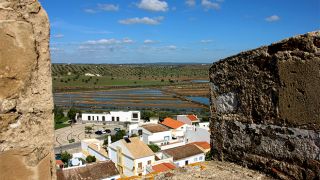
From Castro Marim, you can see the salt marsh, the Guadiana River, and the sea on one side and the mountains stretching to the horizon on the other. It is this landscape that challenges lovers of open spaces, those who take an interest in identifying birds and plants, and enjoy walking, cycling or activities done in nature.
Up high, Castro Marim Castle is strategically aligned with the São Sebastião Fort and the Santo António Ravelin. The space between them is filled with the city's white houses decorated with colourful platbands, roof terraces, and “lace” chimneys. Their simplicity reflects the architectural style characteristic of the Algarve, where white predominates, broken up by ochre and blue stripes - colours also used to decorate the houses’ platbands with geometric shapes and floral motifs.
The medieval Castle stands as a reminder of the Christian conquering of Castro Marim commanded by Paio Peres Correia in 1242, when the city became part of Portugal. Later in the 13th century, during the reign of King Dinis (1261-1325), the castle became the headquarters of the Order of Christ, created to replace the Order of the Templars, before the order’s seat was transferred to Tomar. The military importance of defending the border was reinforced in the 17th century with the construction of the São Sebastião Fort and the Santo António Revelin.

Within the city itself, the Parish Church dedicated to Our Lady of the Martyrs was built in the 18th century on the site of an old hermitage honouring the “Martyrs” - Christians who settled here during the Reconquest.
The hill housing the Santo António Revelin is also home to the Castro Marim Territorial Interpretation Centre, where you can learn more about the region's history. The centre provides a breathtaking view over the Castro Marim and Vila Real de Santo António Salt Marsh Natural Reserve and the mouth of the Guadiana River, and is a good starting point for various walking trails.
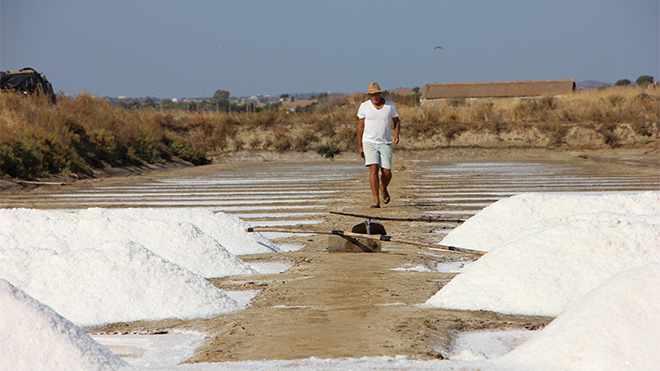
Salt evaporation pools cover around 30% of the area of the salt marsh - one of the riches of the area - where artisan salt gathering practices are still carried out. Be sure to visit them to take part in tastings or guided tours. At Casa do Sal, in the village, you can learn all about the importance of salt to the local economy and history of the region.
The salt marsh is also an excellent place in which to discover the fauna and flora and to watch the water birds that rest, feed, and nest here.
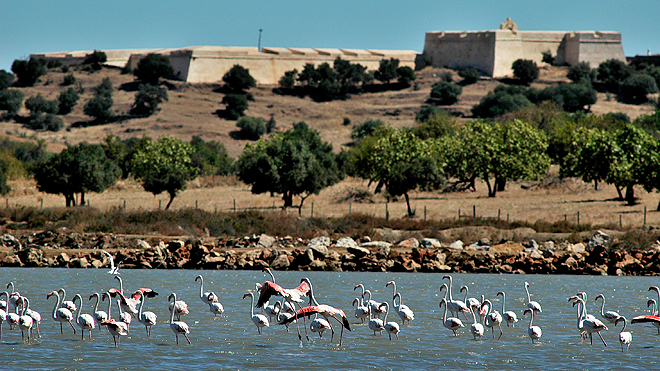
Walking and cycling tours are among the most popular local activities. The Great Guadiana Route, which takes explorers through Castro Marim, can either be started or completed in Vila Real de Santo António. To explore the river, you can also opt for an organised trip on one of the local boats, many of which include lunch on board - the perfect chance to delight in the regional cuisine.
Here, by the sea, many traditional dishes are naturally fish-based. We recommend razor clam rice, skinned horse mackerel, fish stew, and tuna steak with onion sauce. Among the most delicious sweet treats are stuffed figs, almond and honey cake.
In the Algarve, the closest beaches are year-round attractions, whether for a summer dip in the sea or long walks along the Vila Real de Santo António sands and the Formosa Lagoon Natural Park.
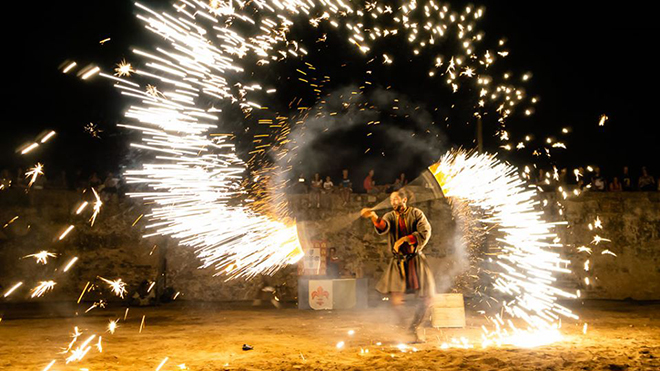
The city festival dedicated to Our Lady of the Martyrs takes place on the 15th August, a month that draws to an exciting close thanks to the Medieval Days, a historical event enjoyed by all. As part of the festivities, Castro Marim Castle once again welcomes kings and queens, knights, fools, jesters, noblemen and ladies. The magic of times long gone is recreated in tournaments fought on horse or on foot, street theatre, banquets enjoyed to the tune of period music, and a goods and crafts fair.



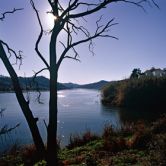

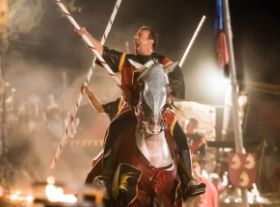
 Explore
Explore 
 Remember and Share
Remember and Share 


